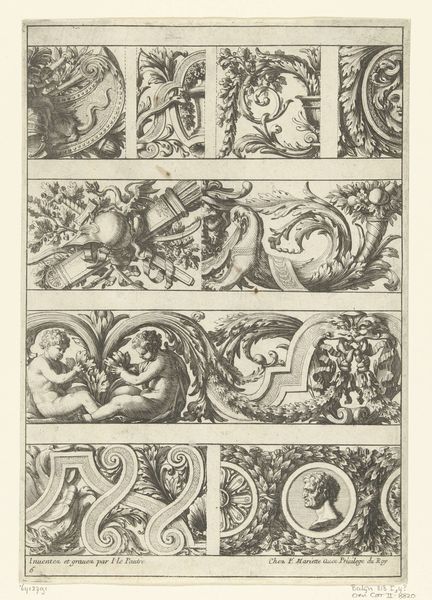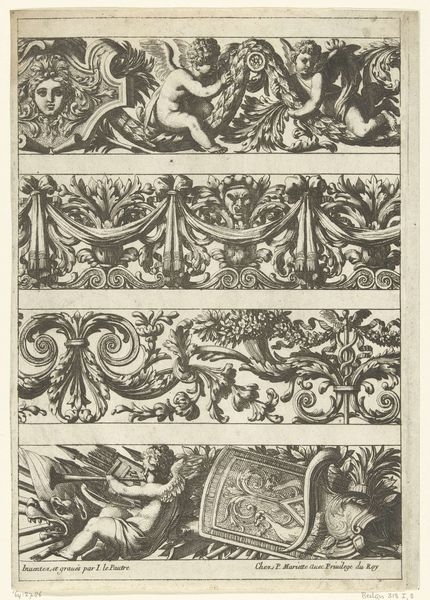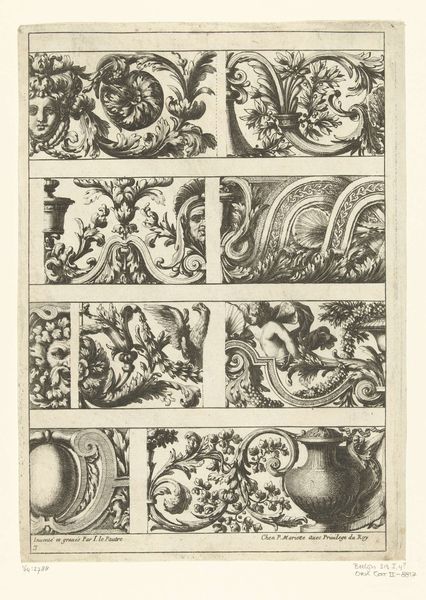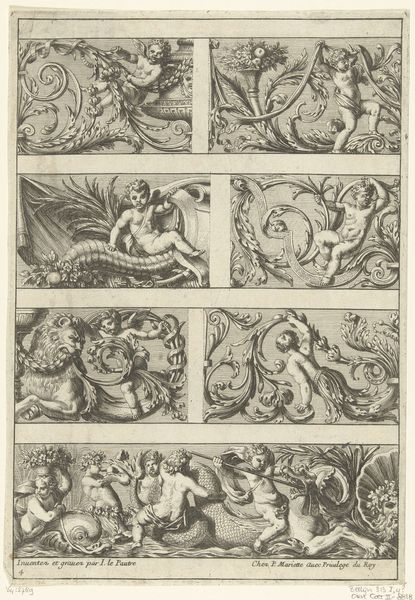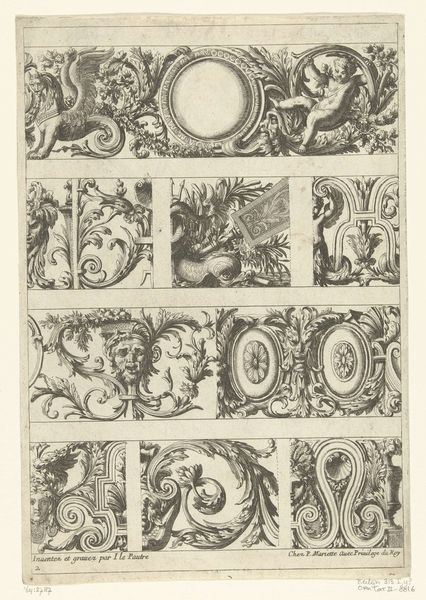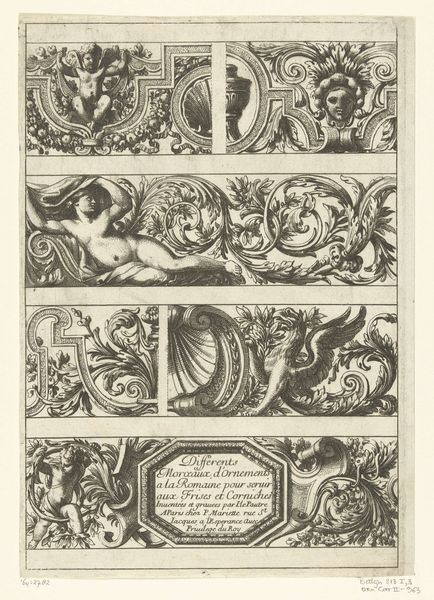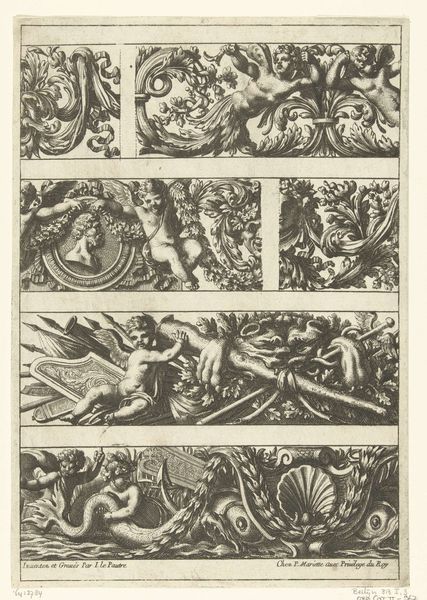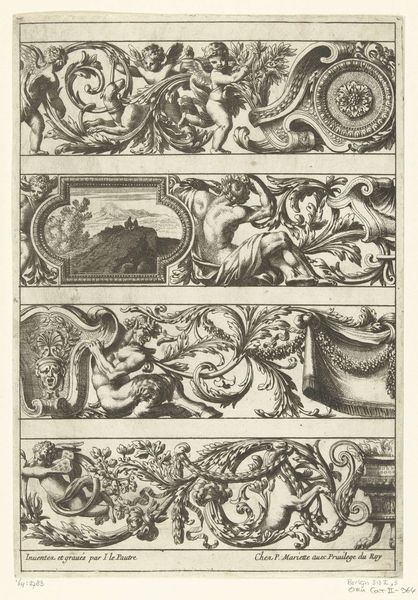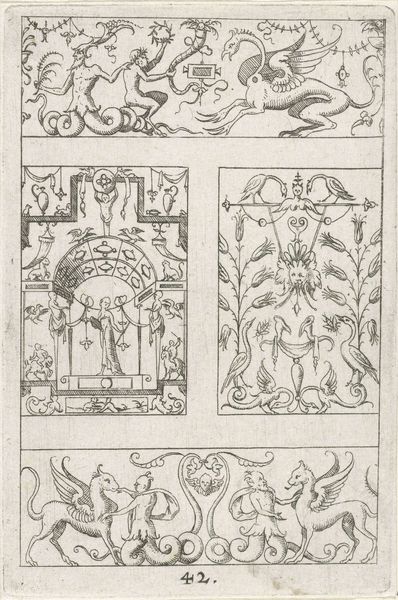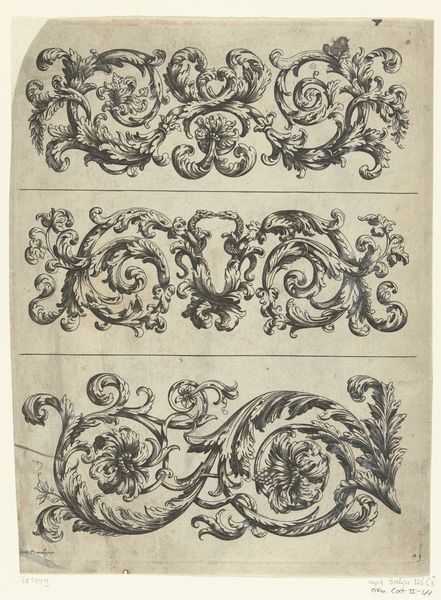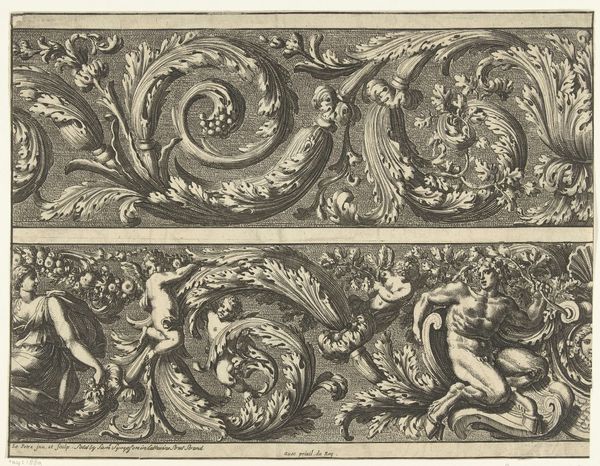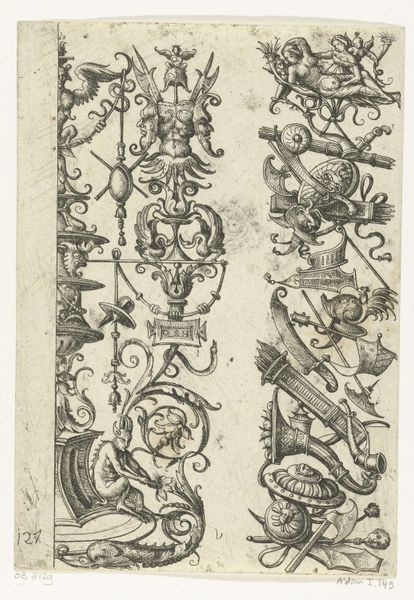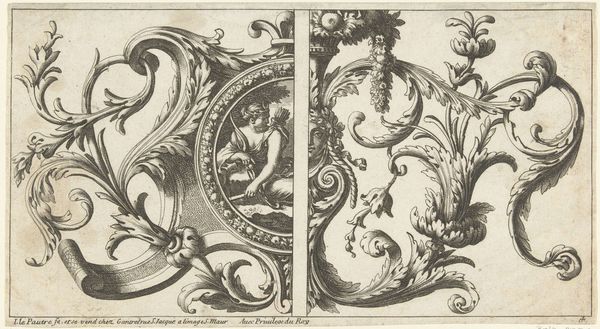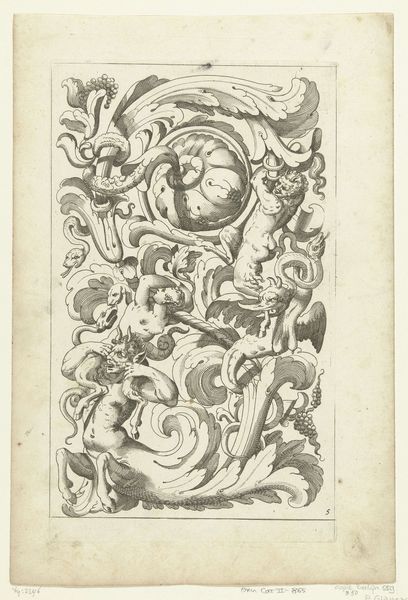
drawing, print, engraving
#
drawing
#
allegory
#
baroque
#
pen drawing
# print
#
old engraving style
#
form
#
pen-ink sketch
#
line
#
engraving
Dimensions: height 273 mm, width 190 mm
Copyright: Rijks Museum: Open Domain
Curator: This drawing, titled "Vier rijen friezen," which translates to "Four rows of friezes," was completed by Jean Lepautre before 1716. It's currently held here at the Rijksmuseum. The work appears to be an engraving. Editor: The detail is incredible! Even in reproduction, you can see the fine lines that create the ornate forms. There's a definite lightness and playful air about it, despite the rigid structure of the rows. Curator: Indeed, Lepautre, a key figure in French Baroque art, was known for his detailed ornamental designs and engravings. Prints like these were often models for artisans to emulate and reproduce across various decorative arts, from furniture making to building interiors. The medium itself facilitates a dissemination of style and access to design. Editor: That’s fascinating, it’s interesting to see this work from an angle of consumption and the democratization of high styles. To consider the economic and social role of these reproducible images! It really dissolves the boundaries between 'high art' and 'applied arts,' as it speaks to a network of artisans adopting new styles, who probably didn't have access to the elite circles originating such aesthetics. Curator: Exactly! Prints played a crucial role in standardizing and spreading design tastes throughout Europe, impacting both production and reception. It’s easy to forget now that there wasn't a widely used accessible form of image circulation back then. How do you think Lepautre’s works circulated, then? Editor: Likely, through artist workshops or through merchant networks tied to the luxury trades. Each of these ornate friezes feature cherubs and classical motifs... how did those motifs fit into society back then? Curator: This vocabulary allowed elites to visually affirm their positions in society by linking them with the traditions and legitimacy of ancient empires. Editor: I find myself seeing these rows and imagining how labour-intensive creating ornaments with this amount of flourish would have been! To me, this prompts reflection upon our contemporary ideas around labor ethics, mass-manufactured objects, and the means to acquire aesthetics of any form or tradition. Curator: The layered implications! Examining works like this is invaluable. Editor: Absolutely! It reminds us how historical works are active cultural players beyond just artistic relics.
Comments
No comments
Be the first to comment and join the conversation on the ultimate creative platform.
